
Content
Welcome to the Club of Amsterdam Journal. ” All you need in this life is ignorance and confidence, and then success is sure.” – Mark Twain “I dread success. To have succeeded is to have finished one’s business on earth, like the male spider, who is killed by the female the moment he has succeeded in his courtship. I like a state of continual becoming, with a goal in front and not behind.” – George Bernard Shaw “When you get out of bed in the morning and think about what you want to do that day, ask yourself whether you’d like others to read about it on the front page of tomorrow’s newspaper. You’ll probably do things a little differently if you keep that in mind.” – Warren Buffett Felix Bopp, editor-in-chief Join our next Season Event about the future of Success on April 26. And check out our labs in Girona near Barcelona: LAB on Old and New ENERGY – April 17&18 LAB on MEDIA and Human Experience – May 29&30 |
Innovation – a hybrid connection between old practices?
 | Q&A with Humberto Schwab, Director Club of Amsterdam, Innovation Philosopher, Moderator of the Club of Amsterdam LABs in Girona, Spain LAB on Old and New ENERGY LAB on MEDIA and Human Experience |
Club of Amsterdam: Humberto – you are an Innovation Philosopher – most people hardly see a connection between philosophy and daily life and even less between philosophy and business. What is the added value? Why has philosophy something to say?
Philosophy is the body of experimental and theoretical knowledge collected and shared by humanity since the invention of this specie. It is the richest fountain of wisdom about our selves as human beings, our needs and aspirations, our world outside and inside us and most of all about our values.
In philosophy we investigate falsehood and truth, the permanent and the temporarily, good and bad acting, good government and bad societies, beautiful and ugliness.
Most of all we have gathered wisdom about the quality of life. We try to make our daily life every day an experience of quality. At least many people try to reach this. This striving for quality is what connects our life with philosophy. Essential in our daily life is that we have our eyes wide open to see the right elements in their right relation; this is where philosophical methods are. We need to get rid of prejudice and false presumptions.
In business – more and more – the essence lies in the ability in enhancing the quality of life, in part or as a whole. This quality is related to issues of ethical policy and sustainable business. Sustainable is not only a matter of the natural environment, more and more we realize that sustainability concerns the quality of our communities. The pursuit of the good life is more and more the frame in which innovation in the experience economy is moving.
Last but not least, philosophy contains all the possible concepts, approaches, notions and strategies to frame productive ways of reasoning. Innovation is essential the rethinking of tradition, tradition as recipes for life. Taking traditional steps over again leads to new insights.
That is why innovation is often a hybrid connection between old practices.
Innovation sometimes demands new paradigms; philosophy is the producer of new paradigms.
You have been involved in large-scale educational programs. Can you give us an example of what you did and what the outcome was?
We managed to position philosophy in the official juridical structure of the secondary school system in the Netherlands. This old philosophy was recognized as one of the strongest innovation in Holland. I designed a complete program for the schools. A big innovation was the transformation of 100 excellent Dutch teachers from different disciplines into real Socratic teachers. That means wise people who put forward the right questions and not the answers.
At the moment I am involved in fundamental innovations of education in the Netherlands and in Spain.
In our society of the future learning is a value as such. This demands a totally different perspective on education and schooling. In an i-society learning has a different place then in the past hierarchical society. We need business, ngo-s, academies, citizen’s organisations and local government to co-create a challenging learning landscape in Europe.
In your EuroLab you use a special combination of techniques – some have been widely used in industries. Can you tell us why you choose them and how you adapt them to your projects?
The most used techniques are used instrumental while I always want to work in dialogues. A dialogue involves the total presence and commitment of the individual as reflective being. This means maximal awareness and maximal responsibility.
We cannot oppose general techniques on humans, without losing their individual strength. The Appreciative Inquiry method is very strong dialogue method in business, especially when – like the present situation – the relations between the stakeholders become totally different. The Appreciative Inquiry (AI) bring to light all the hidden good practices and experiences of all the individuals involved, emerged from their personal life. The top down model of the expert above sending his missives down kills the experience wisdom present in the whole organization. This AI method is fruit of a bunch of scientific insight on the effects of positive psychological approaches.
The Socratic method I have adapted to learning situations in school and business is the strongest context I know. Fundamental in this method is the key role of the good question. Putting forward basic questions is the art of collaboration. It gives new air to breath new ideas. People hardly share basic questions, let alone basic assumptions. Yet they work in contexts as if they share assumptions, values and concepts. The deconstructing of a basic question and the reconstructing of a shared answer uses collective intelligence as a rich fountain and provokes strong bounding on crucial challenges. In the Socratic discourse, the philosophical tradition serves as a support system, it helps to articulate good intuitions, good arguments and good ideas of all the participants. The Socratic chair (trained philosopher) represents the tradition and embodies it in a supportive way for each participant.
In a Socratic discourse the group transform in a natural way into a reflecting body that emerges a higher intelligence and a higher responsibility. It exercises human collectively at his best. It has strong rules that forces people to rethink other positions and to rehearse steps in thinking taken by others, it forces people to listen and repeat and to clarify all concepts used. The strong authoritative way of safeguarding the rules by the Socratic chair, gives rise to a real strong participation of all in an egalitarian way.
The strong relation between flourishing business and democratic cultures lies precise in the opportunity to put forward any valuable question of the quality of human life. The dialogue starts with the rethinking of standing practices and will virtualize new possible worlds and actions. Good business ideas are in fact very often philosophical brainwaves!
More and more good business and good government are critically checked on qualitative grounds, from citizens perspectives.
From the Socratic brainstorms we have to come to a stage of productive planning. The future scenario methods are excellent in binding people on shared visions of the future and on shared actions to realize desired scenarios. Good dialogues generate an emergent intelligence that will give complete new frames and horizons. Yet scenarios without value dialogues are blind. That is why in my EuroLABS the basic structure is the embedding of the personas in a value dialogue context. The revitalization of the basic existential questions generates an energy that also creates strong creative content.
We often hear that there has been enough talking and we should act now. Why do you put dialogue into the centre of your labs? And how does it relate to Do-Tanks?
There has definitely been enough talking, but then we talk about talking in the one-dimensional level we are used to do. Besides this talking is mostly discussions without any check of concepts, understanding of each other or reflections on principles or presumptions. This talking is often a chat between deaf people, they afterwards will follow their own routine in the way of thinking they were used to do.
The Club of Amsterdam LABs lead to a change in internal dialogue; people really need a strong dialogue with other beings to change their internal reflections and dialogues. This will directly lead to action, when you make shared action plans and design a sustainable dialogue with the stakeholders. To shift from a money driven society to a value driven society needs a new way of talking: the real human dialogue.
Action is always for a crucial part guided thinking or unconscious frameworks of meaning. The Socratic dialogues make sharing intelligent action possible.
Thank you Humberto!
Energy LAB
| LAB on Old and New ENERGY An immersed experience of a Do-Tank April 17 & 18, 2007 Location: Girona near Barcelona, Spain Max. 20 Delegates Moderated by Humberto Schwab, Director, Club of Amsterdam, Innovation Philosopher and the Thought Leaders Nathalie Horbach, Centre for Energy, Petroleum and Mineral Law and Policy, University of Dundee Nuclear policies specialist Simon Taylor, Director and Co-Founder, Global Witness Environmental issues Christof van Agt, International Energy Agency Sustainable energy specialist Paul Holister, Nanotechnology & Energy |
News about the future of Energy

The good news first. Renewable energy, combined with the smart use of energy, can deliver half of the world’s energy needs by 2050.This new report, ‘Energy [R]evolution: A sustainable World Energy Outlook’, shows that it is economically feasible to cut global CO2 emissions by almost 50% within the next 43 years. It also concludes that a massive uptake of renewable energy sources is technically possible. All that is missing is the right policy support.
The bad news is that time is running out. An overwhelming consensus of scientific opinion now agrees that climate change is happening, is caused in large part by human activities (such as burning fossil fuels), and if left un-checked, will have disastrous consequences. Furthermore, there is solid scientific evidence that we should act now.

Sealing carbon dioxide (CO2) under the seabed in Japan
Injecting carbon dioxide into the ground is a technology currently used for the subterranean storage of natural gas and for increasing petroleum production – known as “enhanced oil recovery,” or EOR. The idea behind sub-seabed storage is to apply this technology in the interests of environmental conservation.
It is estimated that up to 90 billion tons of carbon dioxide can be stored in subterranean locations in Japan and sub-seabed locations in Japanese waters. This corresponds to 70 to 80 years’ worth of Japanese carbon dioxide emissions. As Japan has a wealth of experience and know-how in underground storage of natural gas and EOR technology, its work in the field of carbon dioxide sequestration is thought to be closest to practical application.
Murai Shigeo, the leader of the RITE carbon dioxide sequestration group: “We have been able to show that carbon dioxide injection in Japan’s particular geological conditions is possible, and computer simulations based on our monitoring activity give a good idea of how the gas will behave over the next thousand years.”
Club of Amsterdam blog
 | Club of Amsterdam blog February 12: Innovation – a hybrid connection between old practices? January 8: The Future of Consciousness December 18: selflead December 14: On the Art of Value-Webbing |
News about the Future

The Blue Brain project is the first comprehensive attempt to reverse-engineer the mammalian brain, in order to understand brain function and dysfunction through detailed simulations.
A project this ambitious would have been ridiculed a few years ago. “Today we have the computers we need,” says biologist Henry Markram, 44, the project’s director. “And we know enough to begin.” Markram knows about the problems his group can look forward to. “But if we don’t build the brain,” he says, “we’ll never understand how it works.”

Realeyes3D was selected from 20 MobileMonday Global Peer Award finalists chosen from all over the world as best-of-breed companies demonstrating exceptional innovativeness in mobility.
Realeyes3D operates at two levels: It runs a mobile copy service for camera phone users, www.qipit.com and sells “handwritten messaging” applications to handset vendors.
Q&A with Paul Holister about Nanotechnology & Energy
 | Paul Holister is a consultant specialising in, among other things, the commercial and societal impacts of new technologies. He is currently writing “Nanotechnology and the Future of Energy”, to be published by John Wiley and Sons. Paul is a Thought Leader at the LAB on Old and New ENERGY |
Club of Amsterdam: Paul, you are currently writing a book about “Nanotechnology and the Future of Energy”. Can you describe how nanotechnology can have an impact on energy generation, storage, and utilization?
Nanotechnology operates at such a fundamental level that there is very little of a technological nature that it will not impact. Thus its effects on energy generation, transmission, storage and consumption are numerous and diverse. Some will be incremental and some quite possibly revolutionary.
Rather than trying to sketch the whole landscape, a few examples will hopefully illustrate the variety.
At the mundane end of the scale you have anti-fouling paints for wave or tidal power, or materials with a higher tolerance for radiation in nuclear reactors. I did say mundane.
In wind power, the potentially enormous improvements in strength-to-weight ratio of composite materials used in blades could pay back surprisingly well because the relationship of blade length to efficiency is not linear but follows a power law – though there is much argument about how this pans out in the real world.
At the other extreme of nanotech impact, you have solar energy. We are children in this area, and the playground is built on the nanoscale. Almost any development is going to involve nanotech – an intriguing recent exception being the use of lenses to focus light on old-fashioned silicon photovoltaics, thus demanding less of this expensive material. This is one of the areas where nanotech-enabled technology could well be revolutionary.
But what makes for a revolution in energy generation? Two things: availability and economics. The fact that solar energy is so bountiful – enough hits the Earth in a minute to meet our global requirements for at least a week – makes it potentially revolutionary; it’s just the cost of capturing that energy that has been standing in the way. Reduce that enough, or increase the cost of the alternatives, and you have a revolution.
One other energy source could, I believe, be equally revolutionary. Not fusion, which, despite the dreams of my youth, I sadly have to relegate to a distant future – not that the ongoing experiments aren’t worthwhile. Geothermal energy, boring as hot rocks and steam may sound – outside of saunas, that is -, has revolutionary potential for the same reason as solar – an essentially unlimited supply of energy untapped only because of economics. The nanotech connection is not as direct here as with solar – you have tougher materials to cut drilling costs or thermoelectric tunneling for efficient low-grade heat conversion – but it only takes the right conjunction of developments and geothermal power stations will be springing up – or down – all over the place.
I’ve only considered here principal power generation, but this should already give some sense of the breadth and potential scale of impact. I’d be surprised to find any reader of this unaware of the excitement surrounding developments in fuel cell and battery technology. Nanotechnology figures almost without exception in the cutting edge of both.
But I could go on for ages answering this question – you could almost make a book out of it …
How do nanotechnology-based solutions apply particularly, if at all, to environmental concerns and energy security issues?
From an energy security point of view, nanotech developments are invariably positive since, at the very least, they can help save energy – aerogels for better insulation, IR-reflective window coatings, low-grade heat conversion in cars, etc.. They also assist to varying degrees in the development of alternatives to the fossil fuels upon which so many of us are now so dangerously dependant. I’ve already mentioned the potential of solar and geothermal energy.
On the environmental front the answer is not so clear. We live in a world where short-term economics have an overwhelming influence on decision making.
The good news for those who worry about things like global warming, is that the increasing cost of oil – a long-term trend that will not stop, oil being a finite resource – and the decreasing cost of alternatives such as solar energy, give renewables an ever more favourable economic position. When you look at the diverse spread of nanotech-related impacts they are almost always supporting technologies with an improved environmental profile.
Unfortunately, there is a rather big exception to this. Nanotechnology has helped greatly improve the effectiveness of catalysts. Fuel cells and catalytic converters are among the welcome beneficiaries.
But catalysis is also at the heart of gas-to-liquid and coal liquefaction technologies that promise oil independence for those with access to previously uneconomical gas reserves or to coal reserves. Energy security is a big carrot and it so happens that two highly-populated countries that rank among the fastest-growing economies in the world, and thus the fastest-growing energy consumers, are coal-rich: China and India. North America too is coal-rich.
If such countries can start to economically run their cars, trucks and buses on diesel made from coal – which ironically is low-emission compared with normal diesel at the vehicle end but overall produces more CO2 than oil-based diesel – then we could be looking at a greenhouse gas nightmare scenario – there is enough coal in the world to supply our energy needs for hundreds of years.
So, greenhouse nightmare or an emission-free future? Nanotechnology can enable them both. Barring a global wave of forward planning unseen in mankind’s history, economics will probably make the decision for us.
What do you expect from a dialogue between “old and new energy”?
Taking ‘old energy’ to be the way we have done things since the dawn of the industrial revolution, i.e. primarily by burning fossil fuels, I think that the likeliest difference between old and new energy, and the generator of greatest debate, will be systemic rather than one particular technology or another. The question of when and how the transition to new energy occurs is also intriguing – as the coal liquefaction scenario above shows, we could in theory be stuck with the old, or pretty similar, for some time to come.
We have gorged ourselves for more than a century on the energy equivalent of a free lunch. As we start to realise that, while there may be such a thing as a free lunch, it isn’t necessarily dinner and breakfast too, we can size up the alternatives, the most striking thing about which is their diversity.
Only coal and nuclear fission are potential candidates for maintaining the uniform and monolithic energy network we have now in the developed world. There are good reasons to avoid both, if we can – some would argue that we cannot.
All the alternatives involve a mix of technologies and energy sources, with energy not always being produced where you want and when you want, thus producing a far more complex system than we have now. The phrase ‘intelligent grid’ is often held up as an example of how this complexity will operate, with buying, selling and saving of energy being possible at many scales. I’d rather do away with the ‘grid’ word altogether because it evokes the electricity grid that we in the developed world generally take for granted but which exists only as a consequence of our historical dependence on fossil fuels, and is grossly inefficient. In a mixed-energy-source scenario, the traditional grid would be challenged by localised generation, the form of which would vary according to location – Saudi: sunshine; Greenland: geothermal.
The gridless or localised grid scenario begs the question of how large amounts of energy will be transferred from one place to another, which will no doubt continue to be either required or an economically viable activity. The classic answer is hydrogen, but it is unfortunately a lousy way to transport energy, thanks largely to its volatility. In theory, the development of cheap, high-load superconducting cables – perhaps made of carbon nanotubes – might keep the old-fashioned grid alive but it seems to me that an efficient means of converting whatever energy source happens to be available to you into a fuel that is liquid, or close to it, at room temperature – e.g. methanol -, combined with a fuel cell technology to make good use of it, would be a hard system to beat when it comes to storage and transmission.
As I write, there are at least a few scientists around the world trying to figure out ways to outdo Mother Nature in turning sunlight into a compact, transportable energy source. All of which happens, of course, on the nanoscale.
Thank you Paul!
Next Season Event
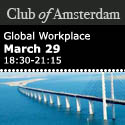 the future of the Gobal Workplace Thursday, March 29, 2007 Registration: 18:30-19:00, Conference: 19:00-21:15 Where: PricewaterhouseCoopers, Thomas R. Malthusstraat 5, 1066 JR Amsterdam With Mandar Apte, Business Strategy – Competitive Intelligence Analyst, Shell Global Solutions International B.V. Workplace of the future – scenarios and trends – Views of a global citizen Andrew Kruseman Aretz, Partner, Human Resource Services, PricewaterhouseCoopers Belastingadviseurs N.V. Changing demographics of people flows around the World Jean-Claude Knebeler, Director of Foreign Trade, Ministry of the Economy and Foreign Trade, Luxembourg Does off-shoring hold the key to success, especially for SME’s? Moderated by Hedda Pahlson-Moller, Managing Director, Omnisource International, Benelux Client Executive for Evalueserve |
Recommended Book
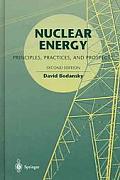
Nuclear Energy: Principles, Practices, and Prospects
by David Bodansky
The world faces serious difficulties in obtaining the energy that will be needed in coming decades for a growing population, especially given the problem of climate change caused by fossil fuel use. This book presents a view of nuclear energy as an important carbon-free energy option. It discusses the nuclear fuel cycle, the types of reactors used today and proposed for the future, nuclear waste disposal, reactor accidents and reactor safety, nuclear weapon proliferation, and the cost of electric power. To provide background for these discussions, the book begins with chapters on the history of the development and use of nuclear energy, the health effects of ionizing radiation, and the basic physics principles of reactor operation.
The text has been rewritten and substantially expanded for this edition, to reflect changes that have taken place in the eight years since the publication of the first edition and to provide greater coverage of key topics. These include the Yucca Mountain repository plans, designs for next-generation reactors, weapons proliferation and terrorism threats, the potential of alternatives to nuclear energy, and controversies about low-level radiation
Cross-Media Summit for Content Discovery
The Strategy, Technology and Business Case for Content Description, Visibility, Search and Discovery
Friday 9th March 2007, Frontline Club, London, UK
Gathering creators, rights holders and technology experts
Moderated by Bob Auger, Technology Correspondent, Cue Entertainment
Free to experts
How do content owners increase the visibility and discovery of their content? Do we need more standards? What are the drivers for industry adoption? Can we make the tools easier to use? What are the requirements of end-users in the media industry?
THE UNIVERSAL CATALOGUE – IS THERE THE WILL TO BUILD IT?
Participants include CEO of ISAN, Head of R&D at MCPS-PRS Alliance, Principal Engineer for Pioneer Digital Design and Microsoft’s DDEX board member.
Bringing together key cross-industry strategists and technologists from standards, search, image, music and film, shaping the digital media marketplace. Identifying areas for further investigation to drive adoption of metadata syndication ecosystems. Participants will share experiences, discover synergy and innovate.
www.kendra.org.uk
Media LAB
| LAB on MEDIA and Human Experience An immersed experience of a Do-Tank May 29 & 30, 2007 Location: Girona near Barcelona, Spain Max. 20 Delegates Moderated by Humberto Schwab, Director, Club of Amsterdam, Innovation Philosopher and the Thought Leaders Laurence Desarzens, urban communicator, beatmap.com Media & communication specialist for lifestyle companies Paul F.M.J. Verschure, ICREA research professor, Technology Department, University Pompeu Fabra Psychologist. Specialist for wheeled and flying robots, interactive spaces and avatars Ricardo Baeza-Yates, Director, Yahoo! Research Specialist for content and structure organization of a website and for blogs, vlogs and social networks Rudy de Waele, Founder, M-trends.org Wireless communication expert |
Agenda

| Our Season Events for 2006/2007 are on Thursdays: |
| the future of Global Workplace March 29, 2007, 18:30 – 21:15 the future of Success April 26, 2007, 18:30 – 21:15 the future of Tourism May 31, 2007, 18:30 – 21:15 Taste of Diversity June 28, 2007, 18:30 – 21:15 |

| LAB in Girona near Barcelona, Spain, moderated by Humberto Schwab: LAB on MEDIA and Human Experience May 29 & 30, 2007 |
Club of Amsterdam Open Business Club
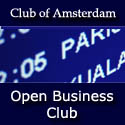 | Club of Amsterdam Open Business Club Are you interested in networking, sharing visions, ideas about your future, the future of your industry, society, discussing issues, which are relevant for yourself as well as for the ‘global’ community? The future starts now – join our online platform … |















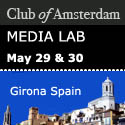
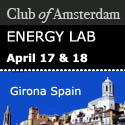




Customer Reviews
Thanks for submitting your comment!